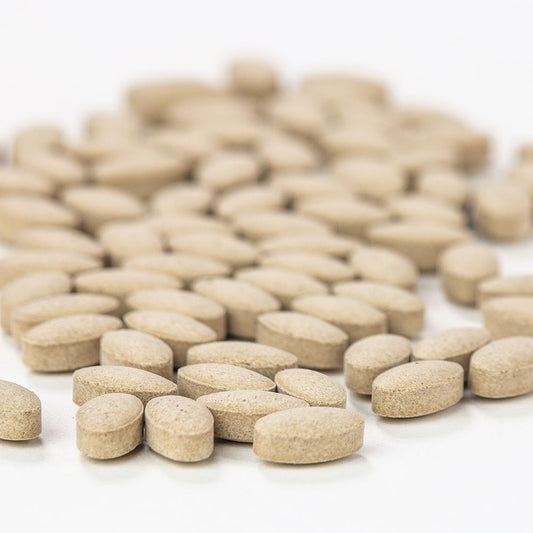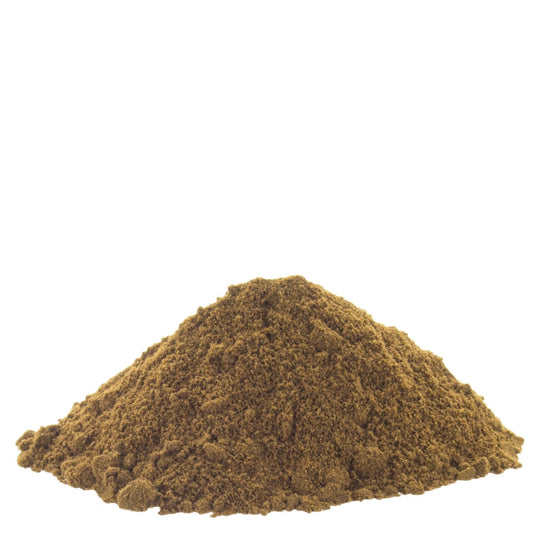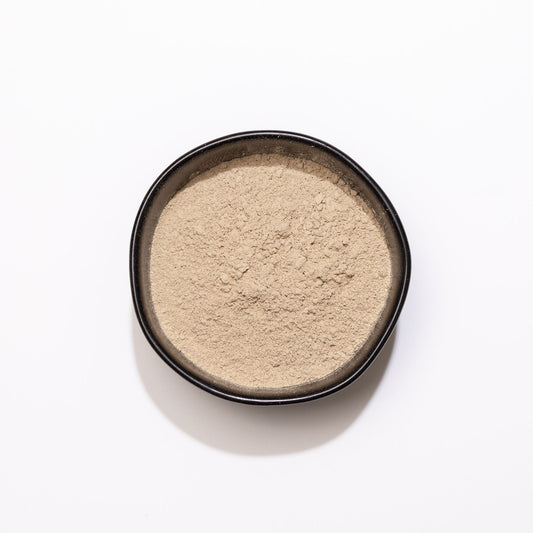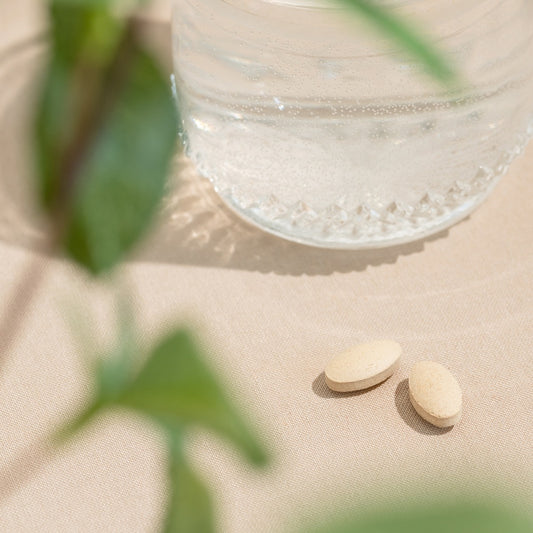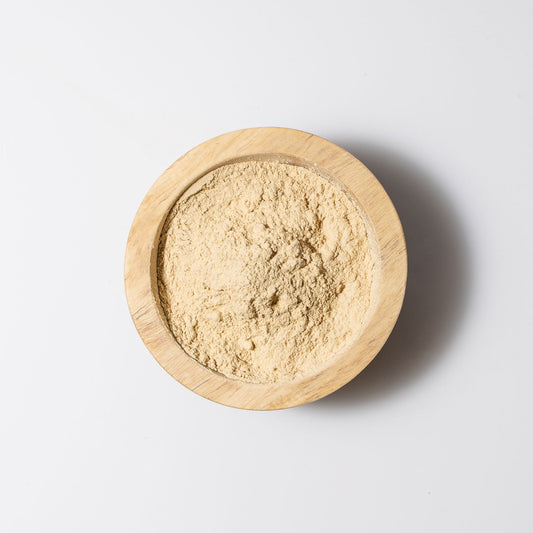Balancing Kapha in the Joints
The Ayurvedic Approach

Kapha-type joint ailments are initiated by excess kapha in the body. The imbalance typically begins in the digestive tract, where kapha has accumulated as a result of a kapha-provoking diet or lifestyle. This might involve eating foods that are heavy, oily, dense, or excessively sweet.
Kapha is also aggravated by inactivity, dullness, boredom, lethargy, and inadequate exercise. These and other kapha-provoking influences elevate kapha in the stomach, kapha's natural home in the body.
As the excess begins to accumulate, it can cause a dull appetite, sluggish digestion, emotional eating tendencies, excess mucus, congestion, frequent colds, coughs, and kapha-type emotions, like attachment, possessiveness, and greed.
Meanwhile, the excess kapha also compromises agni (the metabolic fire), which can initiate the formation of ama (toxins) in the GI tract.
If these imbalances are not addressed, the accumulating kapha and ama can migrate to the colon, and will eventually enter circulation—in search of another place to lodge.
This is where the joints come in; the joints have a natural affinity for imbalances that enter circulation via the colon because the colon is the seat (home) of vata, and the bones and joints are another important gathering place for vata in the body.
Similarly, the ama shares many qualities with kapha dosha and therefore has an affinity with shleshaka kapha, a subtype of kapha that is primarily responsible for cushioning the joints.
If the condition of the local agni in any of these tissues is weak, the excess kapha and ama can invade them, causing stiffness, swelling, and diminished range of motion. Over time, the excess kapha can damage the joints and affect their overall functionality.
How to Identify Excess Kapha in the Joints
So what does this process feel like in our bodies? Kapha in the joints often causes the joints to feel cold and clammy to the touch.1 They tend to be stiff, swollen, restricted in mobility, and are often more painful in the morning—before the body has had an opportunity to move around and warm up.2
Tips for Balancing Kapha
In order to balance kapha in the joints, we need to clear the kapha and ama from the joint space and send it back to the digestive tract, where it can be eliminated.
But we simultaneously need to tend to agni—both in the digestive tract and in the bone and joint tissues—to ensure that the kapha aggravation, the subsequent creation of ama, and their mutual intrusion into the joint spaces is halted.
Each of the following recommendations supports this process in its own way.
Eat a Kapha-Balancing Diet
Because joint ailments typically begin in the digestive tract, an appropriate kapha-balancing diet is essential to the healing process. In the case of excess kapha (which is heavy and dense in nature), focus on ingesting light, dry, warming, and easily digestible foods that are well-seasoned with agni-kindling spices.
Enjoy your choice of a wide range of spices: basil, bay leaf, black pepper, cardamom, cayenne, cinnamon, cloves, coriander, cumin, fennel, garlic, ginger, hing (asafoetida), nutmeg, paprika, saffron, savory, tarragon, turmeric, and more.
Favor the pungent, bitter, and astringent tastes while reducing exposure to the sweet, sour, and salty tastes.
The pungent taste warms and liquefies kapha; the bitter taste lightens, dries, and reduces kapha; while astringent foods (e.g. apples, pomegranate, legumes, broccoli, corn, and cabbage) effectively absorb kapha's oily and liquid qualities.
Include only scant amounts of high quality, organic oils like ghee, sunflower oil, and raw, unheated flax seed oil.
Do your best to avoid foods that can further aggravate kapha in the joints, like dairy products and icy cold foods and drinks.3
In addition, you can stoke the digestive fire about thirty minutes before lunch and dinner by chewing a slice of fresh ginger (about the size of a nickel) with a pinch of sea salt, a few drops of lime juice, and about ¼ teaspoon honey.
If this feels overwhelming, you could take one or two Kapha Digest tablets about thirty minutes before lunch and dinner, or sprinkle Trikatu (the powdered version of this same formula) on your food like pepper.
Get Adequate Movement and Exercise
Making time to move our bodies in an appropriate way supports natural detoxification by promoting healthy circulation and by helping to move stagnation from the organs and tissues. Movement and exercise are particularly critical to balancing excess kapha in the joints.
Ideally, exercise between 6–10 a.m. and p.m., when kapha is naturally elevated in the atmosphere. For kapha imbalances, the ideal exercise program is typically vigorous and challenging. Enjoy activities like brisk walking, jogging, biking, hiking, martial arts, and other forms of strength-building, aerobic exercise.
Whatever your preference, choose a routine that is enjoyable and rewarding for you so that you are motivated to keep at it.
Massage the Joints with Herbal Pastes
Ayurveda has long recommended a variety of herbal pastes applied topically to promote healing. These particular pastes are especially supportive when there is excess kapha in the joints.
Calamus Powder Paste
Calamus powder is a highly aromatic herb that supports the lymphatic system, helps remove natural toxins, promotes circulation, and enlivens the skin and tissues. Start with 1 teaspoon of calamus powder and add just enough warm water to make a paste.4
Apply the paste to the affected joint, allow the paste to penetrate for as long as is comfortable (ideally at least fifteen minutes, but you can also allow it to dry completely), and then rinse with warm water. Adjust the quantity as necessary.
Punarnava and Ginger Paste
A similar paste can be made from Punarnava and Ginger powders. This combination of herbs helps balance the water element in the joints. They also help remove accumulated ama, support the body's natural ability to dissipate inflammation, promote improved circulation, and encourage healing.
Start with 1 teaspoon of each powder and add just enough warm water to make a paste.5 Apply this paste to the affected joint, allow the paste to penetrate for as long as is comfortable (ideally at least fifteen minutes, but you can also allow it to dry completely), and then rinse with warm water. Adjust the quantity as necessary.
Drink Gold Water
Pure gold is strengthening, nourishing, and very supportive of excess kapha in the joints. The healing qualities of gold can be harnessed by preparing water infused with the subtle essence of gold.
Simply place a pure (ideally, twenty-four karat) gold item—like a gold band—in 2 cups of water, bring to a boil, and boil until only 1 cup remains. Remove the gold item (it will not be damaged at all by this process), then cool and store the gold water. Take 1 teaspoon of this water two to three times each day.6
Balance Kapha throughout the Day
Certain elements of a daily routine tend to balance kapha; others tend to aggravate it. You can focus on establishing a kapha-balancing daily routine, including whichever of the following kapha friendly additions appeal to you.
Yoga
Embrace a Kapha-Balancing Yoga practice. Poses that are especially supportive of kapha-type joint issues include Tree (Vrksasana), Triangle, Seated Forward Bend (Pashimottasana), and Revolved Abdomen Variation (Jathara Parivartanasana Variation).7
If you prefer a flow, Sun Salutations (Surya Namaskar) will warm the body, encourage circulation, awaken the tissues, bring clarity to the mind, and open the subtle channels of the body.
(Note: some of these poses will appear under the Vata- and Pitta-Balancing Yoga Departments, but are also wonderful for kapha in the joints).
Pranayama
Just five to fifteen minutes of kapha-balancing pranayama every day on an empty stomach can be transformative. These practices help balance kapha while digesting and clearing ama. In particular, consider the following practices.
Bhastrika (Bellows Breath) burns accumulated ama, kindles agni, improves circulation, and is very balancing for kapha.
Kapalabhati (Skull Shining Breath) kindles agni, is very detoxifying, and helps stimulate synovial circulation in the joints, which can help clear stiffness and swelling.
Nadi Shodhana (Alternate Nostril Breathing) clears and releases toxins while awakening and cleansing the subtle channels of the body.
Meditation
Consider adding five to ten minutes of So Hum Meditation to your daily routine to effectively quiet the mind and calm the nervous system, which will support the joints—both locally and systemically.
Consider the Addition of Kapha-Balancing Herbs
Herbs can help balance kapha systemically, but can also optimize the health of the digestive tract (where many joint imbalances originate), kindle agni throughout the system, and encourage the elimination of ama—both from the GI tract and from the joints themselves.
More specific information about how each of these herbs and formulas supports the joints is provided below.
Punarnavadi Guggulu
Guggulu resin is a penetrating, detoxifying, and rejuvenating herb renowned for its ability to scrape naturally accumulating toxins from the gross and subtle channels of the body (physical and energetic pathways), but also for its capacity to carry other herbs deep into specific tissues.
This traditional Ayurvedic formula has long been used to balance the water element in the body, supporting the healthy elimination of fluids, and balancing excess kapha in the kidneys, heart, and joints.
Take one Punarnavadi Guggulu tablet three times per day.8
Punarnava
Punarnava is one of the best herbs for reducing kapha. It is particularly adept at balancing the water element throughout the body and is frequently used to balance excess kapha in the joints and promote comfortable movement.
Ashwagandha
Ashwagandha is balancing for both vata and kapha and has a natural affinity for the muscle and bone tissues. Its revitalizing and strengthening nature can be very helpful in promoting comfortable joint movement.
Ashwagandha is available in several forms: tablets, powder, and a liquid extract.
Turmeric
While Turmeric is familiar to most of us as a kitchen spice, it offers a plethora of health benefits, and turmeric's warming, clarifying capacity can help balance excess kapha in the joints. It strengthens digestion, helps eliminate natural toxins from the GI tract, and purifies the blood, all while soothing and nourishing the joint tissues.
Turmeric is available in both tablet and powdered form.
Systemic Support for Kapha
Balance kapha systemically with Healthy Kapha tablets. To help clear kapha from your channels of digestion and elimination, consider Kapha Digest tablets. You can also use Trikatu, the powdered form of Kapha Digest, which can be taken alone or sprinkled on your food like pepper.
And finally, if kapha is truly the primary concern, consider taking Bibhitaki instead of triphala to more specifically balance kapha throughout the system.
About the Author
Melody Mischke, AP
Melody Mischke is a certified Transformational Coach, Ayurvedic Practitioner, Yoga Teacher, Writer, and Intuitive. She began studying meditation in India at 18, and has...
More for You
Balancing Vata in the Joints
Balancing excess vata in the joints can help reduce dryness, cracking, popping, and stiffness. Read this resource for tips to support healthy joints.



